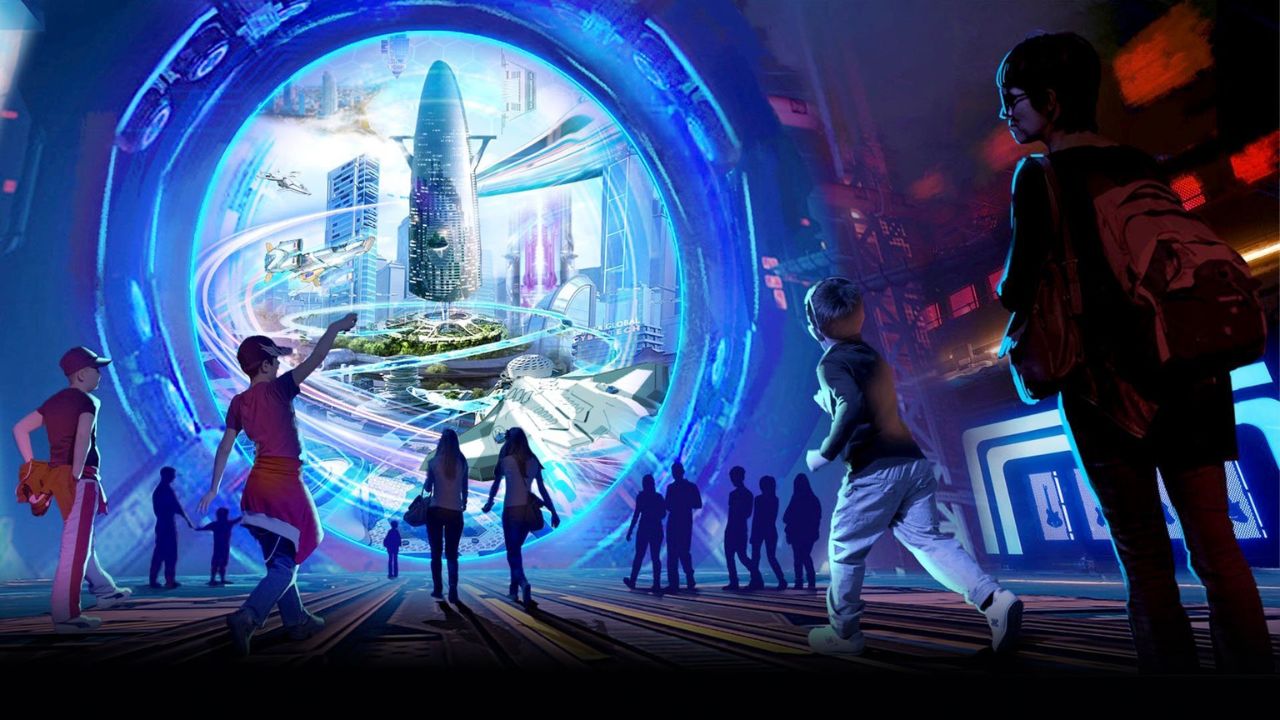The rise of the metaverse is one of the most exciting developments in the digital landscape, opening up a world of new opportunities for brands to connect with consumers. As virtual worlds continue to evolve, brands are discovering innovative ways to interact with users in immersive, engaging environments. Metaverse advertising is quickly becoming a powerful tool for marketers, offering new avenues for reaching highly engaged, tech-savvy audiences. From virtual billboards and branded experiences to in-game advertisements and live events, the metaverse is reshaping how brands approach marketing. In this blog, we’ll explore how brands are entering the metaverse, the various forms of advertising within these virtual spaces, and the future of marketing in this exciting new frontier.
1. What is the Metaverse?
The metaverse is a collective term for a network of immersive digital worlds that exist online. Unlike traditional internet browsing or social media, the metaverse allows users to interact with virtual environments and other users in real-time using 3D avatars, augmented reality (AR), and virtual reality (VR) technologies. These worlds are interconnected, meaning people can seamlessly move between different digital environments.
Examples of popular metaverse platforms include:
A gaming platform where users can create and play games in a 3D virtual world.
A multiplayer game with virtual concerts and events, allowing users to engage with branded content.
Decentraland:
A blockchain-powered metaverse where users can purchase land, build spaces, and participate in decentralized activities.
For marketers, the metaverse represents a vast new territory to advertise in, offering highly interactive, immersive experiences where traditional advertising methods (e.g., banner ads or pop-ups) are replaced by more engaging and creative methods.
2. Why the Metaverse Matters for Brands
The metaverse offers several compelling reasons why brands should pay attention to it as a new frontier for marketing:
Deeper Engagement:
In traditional advertising, brands simply display their message to a passive audience. However, in the metaverse, users are active participants. Brands can create interactive virtual experiences where users can engage with products and content in a way that’s not possible in the physical world. For example, a virtual store could allow users to “try on” clothing or interact with digital products in a more engaging way.
Access to New Audiences:
Younger consumers, especially Gen Z and Millennials, are spending more time in digital worlds than on traditional social media. This offers brands the chance to reach a highly engaged audience open to new digital content. These users are also more likely to try virtual goods and experiences, like buying virtual fashion or attending virtual concerts.
Innovation and Differentiation:
The metaverse is still in its early stages, offering brands a chance to be pioneers. By entering now, brands can position themselves as innovators and stand out from competitors who are hesitant to explore this new trend. Early adoption can create a sense of exclusivity and set a brand apart from others in a crowded digital landscape.
Real-Time Data:
In the metaverse, user interactions are tracked in real-time, offering brands a wealth of data on user behavior and preferences. This allows for more targeted marketing and enables brands to refine their advertising strategies based on user actions. By analyzing engagement in the metaverse, brands can develop personalized marketing campaigns that resonate with users on a deeper level.
3. Types of Metaverse Advertising
There are several different ways that brands can advertise within the metaverse, each providing a unique opportunity to interact with users in innovative ways:
Virtual Billboards and Signage
Similar to physical billboards in the real world, virtual billboards are displayed within virtual environments, typically in highly visible areas. These billboards can showcase brand logos, product messages, or promotions to users as they explore the metaverse. However, unlike traditional ads, virtual billboards can be interactive, allowing users to click on them to get more information or access exclusive content. These ads blend into the virtual world, offering brands the opportunity to gain visibility in a natural and non-intrusive way.
Branded Virtual Items
Branded virtual items are digital versions of real-world products that users can wear, use, or collect in the metaverse. These items might include branded clothing, accessories, or even vehicles that users can customize their avatars with. This form of advertising not only creates brand recognition but also allows users to showcase their affiliation with a brand in a social, digital setting. It’s a way for consumers to express their personality and identity through digital representations of the brands they love. Brands like Nike and Gucci have already tapped into this market by offering virtual versions of their clothing in platforms like Roblox and Fortnite.
In-Game Advertising
In-game advertising involves incorporating brands and their products directly into the gameplay experience. This can take the form of branded virtual items, such as a character using a product, or interactive experiences where players engage with the brand during the game. For example, a racing game might feature real-world car brands with their vehicles visible during gameplay. This type of advertising blends into the game’s environment, offering a less disruptive, more seamless advertising experience.
Metaverse Events and Experiences
Metaverse events are virtual experiences that users can attend, such as product launches, concerts, fashion shows, or art exhibits. These events provide brands with a platform to showcase their products and services in a highly immersive way. Events in the metaverse often feature interactive elements, such as virtual meetups or the chance for users to try out digital versions of products. These events can draw huge crowds, giving brands significant exposure while also creating memorable, interactive experiences for attendees.
A notable example is Travis Scott’s virtual concert in Fortnite, which attracted millions of players and featured brand activations throughout the event. These events allow for deeper engagement, as users can attend them from the comfort of their own homes and interact with other attendees in real-time.
Sponsorships and Collaborations
Brands can enter the metaverse by sponsoring events, collaborating with other companies, or creating joint ventures with metaverse platform creators. For example, Nike and Roblox collaborated to create Nikeland, a virtual Nike-themed environment. Users can play games, shop for virtual Nike products, and enjoy an immersive experience. Through sponsorships and partnerships, brands can create engaging collaborations that resonate with users and build brand equity in the metaverse.
4. Key Platforms for Metaverse Advertising
Certain platforms have become central to metaverse advertising. Brands can utilize these platforms to reach and engage their target audience effectively. Some of the key metaverse platforms include:
Roblox
Roblox is an online game platform where users can create and share games, participate in virtual experiences, and socialize. Brands like Gucci, Nike, and Vans have entered Roblox by creating virtual storefronts, offering digital clothing, and even launching interactive brand experiences. This platform is especially attractive to younger generations, making it ideal for targeting Gen Z and Millennial consumers.
Decentraland
Decentraland is a blockchain-based virtual world that allows users to buy virtual land, build on it, and engage in various activities. Brands can purchase land or sponsor virtual events in Decentraland, creating branded virtual experiences like stores or art galleries. Since it’s powered by blockchain, Decentraland also allows for the use of cryptocurrency and digital assets, making it a space where brands can introduce NFTs (Non-Fungible Tokens) or other blockchain-powered products.
Fortnite
Fortnite is a massive multiplayer online game that has hosted virtual events, in-game concerts, and crossovers with major brands and franchises. The game’s virtual events attract millions of users and provide opportunities for branded content through partnerships with artists, game creators, and other companies. Marvel and Star Wars are examples of major brands that have collaborated with Fortnite to create exclusive content for players.
Horizon Worlds (Meta)
Horizon Worlds is Meta’s (formerly Facebook) virtual reality platform that lets users create and interact in 3D virtual environments. Brands can build their virtual spaces, host events, and engage with users in a fully immersive environment. With Meta’s significant user base, Horizon Worlds offers a promising avenue for immersive brand experiences that appeal to a broad audience.
5. Challenges and Considerations for Metaverse Advertising
While metaverse advertising holds immense potential, there are several challenges brands must address:
User Experience:
The immersive nature of the metaverse means that advertising must not detract from the user experience. Overly intrusive ads can disrupt the flow of the virtual world and lead to negative user sentiment.
Data Privacy and Ethics:
With the extensive data that virtual worlds collect (user behavior, preferences, and interactions), it’s crucial that brands comply with privacy regulations and handle user data ethically.
ROI Measurement:
Traditional advertising metrics (like clicks and impressions) don’t apply directly to metaverse campaigns. Brands need to develop new ways to measure engagement and ROI based on user interactions within the metaverse.
Technology Accessibility:
Not everyone has access to the high-end equipment required for a fully immersive VR experience. While the metaverse is growing, brands must ensure their campaigns are accessible to a wide audience and not just those with the latest technology.
6. The Future of Metaverse Advertising
As the metaverse continues to evolve, new opportunities for metaverse marketing will emerge. The integration of technologies like AI for personalized experiences, blockchain for digital ownership (NFTs), and augmented reality will redefine how brands engage with consumers. Brands will likely develop more sophisticated strategies to create immersive brand experiences that resonate with users in these digital environments. This makes it crucial for brands to experiment now to stay ahead of the curve in this rapidly evolving space.
Conclusion:
The metaverse is much more than a passing trend—it represents a transformative shift in how brands interact with their audience. By embracing metaverse advertising, brands can create immersive experiences that not only capture attention but also foster deeper, more meaningful connections with consumers. Whether through virtual items, events, or in-game activations, the metaverse offers an entirely new realm of possibilities for creative marketing strategies. As this digital universe continues to grow and evolve, the potential for virtual world advertising is limitless. Now is the time for brands to explore this emerging space, test innovative approaches, and position themselves as pioneers in the future of marketing. The metaverse isn’t just the future of advertising—it’s the now.








Leave a Reply